Sh: 1: React-Scripts: Not Found
React is a popular JavaScript library used for building user interfaces. When working on a React project, react-scripts is an essential tool that provides a set of handy scripts and configuration files to simplify the development process. It includes scripts for starting a development server, building a production-ready app, and running tests, among others. However, at times you may encounter the error message “Sh: 1: react-scripts: not found,” indicating that the react-scripts package cannot be located. In this article, we will explore the reasons behind this error and discuss troubleshooting steps to fix it. We will also delve into managing dependencies, alternative solutions, and best practices for preventing this error in the future.
Understanding the purpose of react-scripts in a React project
React-scripts is a package that encapsulates a collection of scripts and configuration files that are required to run a React project. It acts as a development server and build tool, enabling developers to focus on writing code without worrying about complex configurations. React-scripts handles tasks like transpiling modern JavaScript features, bundling your application’s code and dependencies, optimizing and minifying assets, and setting up a local development server with hot module replacement.
Reasons why react-scripts might not be found
There can be several reasons why the error “Sh: 1: react-scripts: not found” occurs. Let’s explore a few common causes:
1. react-scripts not installed: This error is likely to occur if you haven’t installed the react-scripts package. React-scripts should be listed as a dependency in your project’s package.json file, and you can install it by running the command `npm install react-scripts`.
2. Package manager issues: Sometimes, the error occurs due to issues with the package manager, such as npm or yarn. Ensure that you have a stable version of your chosen package manager installed and try reinstalling react-scripts.
3. Incorrect project setup: If you cloned a React project from a repository or received it from someone else, it’s possible that the project setup is incomplete or the react-scripts package is missing. Double-check if the project’s dependencies are intact and try installing react-scripts again.
Troubleshooting steps to fix the “react-scripts not found” error
If you encounter the “Sh: 1: react-scripts: not found” error, here are a few troubleshooting steps to resolve it:
1. Verify react-scripts installation: Ensure that react-scripts is listed in the dependencies or devDependencies section of your project’s package.json file. If it’s missing, install it by running the command `npm install react-scripts`.
2. Clear npm cache: Clearing the npm cache can sometimes resolve unexpected package installation issues. Run the command `npm cache clean –force` and try reinstalling react-scripts.
3. Update npm or yarn: Make sure you have the latest version of npm or yarn installed, as outdated package managers can cause compatibility issues. Update npm by running `npm install –global npm` and yarn by running `npm install –global yarn`.
4. Delete node_modules and reinstall packages: Delete the node_modules directory from your project’s root folder and reinstall all packages by running `npm install` or `yarn` in the terminal. This can help fix any potential issues related to package installation.
Managing dependencies and package versions in a React project
Managing dependencies and package versions is crucial for maintaining a stable and functional React project. It is advisable to follow best practices to minimize dependency conflicts and ensure the smooth operation of your project. Here are some recommendations:
1. Use a package manager: Utilize a package manager, such as npm or yarn, to manage your project’s dependencies. Package managers simplify the process of installing, updating, and removing packages.
2. Lock package versions: To avoid unexpected breaking changes, it is recommended to lock package versions in your project’s package.json file. Specify exact versions or use semantic versioning (semver) with version ranges depending on your project’s requirements.
3. Regularly update packages: Stay up to date with the latest versions of your project’s dependencies. Regularly update packages using commands like `npm update` or `yarn upgrade` to benefit from bug fixes, security patches, and new features.
4. Understand compatibility and conflict issues: Some packages might have specific compatibility requirements, and using incompatible versions can lead to errors and conflicts. Always refer to the documentation of each package to ensure compatibility.
Alternative solutions to using react-scripts in a React project
While react-scripts provides a convenient and straightforward way to start and build React applications, there are alternative solutions available for specific use cases. Consider the following alternatives:
1. Custom configuration: If you require more control over your project’s configuration, you can choose to eject from react-scripts. This action generates the configuration files and allows you to modify them according to your needs. However, keep in mind that ejecting is a one-way operation and cannot be reverted easily.
2. Custom Webpack configuration: React-scripts uses Webpack under the hood for bundling assets. If you have specific requirements that cannot be achieved using react-scripts, you can create a custom Webpack configuration. This approach offers greater flexibility but requires more setup and configuration expertise.
Best practices for avoiding the “react-scripts not found” error in the future
To prevent encountering the “Sh: 1: react-scripts: not found” error in the future, here are some best practices to follow:
1. Avoid manual modification: When working with a React project using react-scripts, it’s crucial not to manually modify the configuration files generated by react-scripts. Doing so can lead to unexpected errors and make it difficult to upgrade to newer versions of react-scripts.
2. Regularly update react-scripts: Keep your react-scripts package up to date to benefit from bug fixes, performance improvements, and new features. Check for updates periodically and update react-scripts using npm (`npm update react-scripts`) or yarn (`yarn upgrade react-scripts`).
3. Use reliable package sources: Ensure that you install react-scripts from reliable sources, such as the official npm registry. Stick to reputable packages and avoid using unofficial or custom versions, as they may introduce compatibility issues.
4. Follow versioning best practices: When specifying dependencies in your project’s package.json file, use semantic versioning to indicate version ranges or specific versions. Avoid using overly permissive version ranges that can lead to compatibility problems.
FAQs
Q1. What does the error message “Sh: 1: next: not found” mean?
A1. The error message “Sh: 1: next: not found” indicates that the next command, which is a part of the Next.js framework, could not be located. This issue is similar to the “react-scripts not found” error and requires similar troubleshooting steps.
Q2. Why does the error “command ‘react-scripts build’ exited with 127” occur?
A2. This error occurs when the build command of react-scripts fails to execute properly. It could be due to issues with dependencies, incorrect configuration, or missing files required for the build process.
Q3. How can I resolve the “React scripts command not found error command failed with exit code 127” error?
A3. To resolve this error, ensure that react-scripts is installed correctly by running `npm install react-scripts`. If the issue persists, try the troubleshooting steps mentioned earlier in this article.
Q4. What should I do if I encounter the “React-scripts: permission denied” error?
A4. The “React-scripts: permission denied” error occurs when the user running the react-scripts command does not have the necessary permissions. Make sure you have the required permissions to access and execute the react-scripts command.
Q5. Can I use alternatives to react-scripts, such as Craco or react-app-rewired?
A5. Yes, Craco and react-app-rewired are popular alternatives to react-scripts. They allow you to modify the Webpack configuration used by create-react-app without the need for ejecting. These tools can be useful if you require more control over your project’s configuration.
Q6. How can I fix the “React-scripts start error”?
A6. The “React-scripts start error” can occur due to various reasons, such as incorrect dependencies, configuration issues, or port conflicts. Make sure you have installed the required dependencies, check your project’s configuration files for errors, and ensure that the development port specified is not already in use.
Q7. I encountered the error “Module not found: can’t resolve ‘react-scripts'” – what should I do?
A7. The “Module not found” error typically occurs when a module or file imported in your project cannot be resolved by react-scripts. Check your import statements to ensure they are correct, and verify that the missing module is installed as a dependency in your project.
How To Solve Sh: React-Scripts: Command Not Found After Running Npm Start || Npm || Nodejs || Python
How To Install React Scripts In Ubuntu?
React is a popular JavaScript library used for building user interfaces, and its popularity continues to grow rapidly. If you are an Ubuntu user and want to start working on React projects, you need to install the necessary scripts. In this article, we will guide you through the process of installing React scripts in Ubuntu, ensuring you have a seamless transition into React development.
Before we dive into the installation process, let’s make sure you have a suitable environment to work with React. You will need the following prerequisites:
1. Node.js: React projects require Node.js, a JavaScript runtime, to run on your machine. To install Node.js, open your terminal and type the following command:
“`
sudo apt update
sudo apt install nodejs
“`
You can verify the installation by running `node -v` in your terminal. If you see the installed Node.js version, you are ready to proceed.
2. npm: npm (Node Package Manager) comes bundled with Node.js and is used to manage packages and dependencies. To check if npm is installed, run `npm -v` in your terminal. If a version number is displayed, npm is already installed; otherwise, run the following command to install it:
“`
sudo apt install npm
“`
Now that you have the prerequisites in place, let’s move on to installing React scripts.
1. Create a New React Project:
The easiest way to install React scripts is by creating a new project using `create-react-app`. To install it, run the following command in your terminal:
“`
sudo npm install -g create-react-app
“`
After the installation is complete, you can create a new project by typing:
“`
npx create-react-app my-app
“`
Replace “my-app” with the desired name of your project.
This command will create a new directory called “my-app” with all the necessary files for a React project, including a package.json file that lists the project dependencies.
2. Switch to the New Project Directory:
Navigate to the newly created project directory by running:
“`
cd my-app
“`
Again, replace “my-app” with the actual name of your project.
3. Start the Development Server:
To start the development server and see your React application in action, run the following command:
“`
npm start
“`
This will start the server on http://localhost:3000, and you should see the default React application running in your browser.
Congratulations! You have successfully installed React scripts in Ubuntu and set up your first React project. Now you can start building your own components and applications.
FAQs:
Q: Can I use Yarn instead of npm?
A: Yes, you can use Yarn as an alternative to npm. To install Yarn, run the following command in your terminal:
“`
sudo npm install -g yarn
“`
After installation, you can replace `npm` with `yarn` in the above commands.
Q: How do I install a specific version of React?
A: By default, `create-react-app` installs the latest stable version of React. However, if you need a specific version, you can specify it during the project creation process. For example, to create a project with React version 17.0.2, run:
“`
npx create-react-app my-app –template [email protected]
“`
Q: Can I use nvm to manage Node.js versions?
A: Yes, nvm (Node Version Manager) is a handy tool for managing multiple Node.js versions. You can install it by following the instructions provided by the nvm project. Once installed, you can easily switch between different Node.js versions using the `nvm use` command.
Q: How do I deploy my React application?
A: To deploy your React application, you need to build it for production. In your project directory, run:
“`
npm run build
“`
This command generates an optimized build of your application in the “build” directory. You can then deploy the contents of this directory to a hosting service of your choice.
In conclusion, installing React scripts in Ubuntu is a straightforward process that involves creating a new React project using `create-react-app` and starting the development server. By following the steps outlined in this article, you are now equipped to explore the endless possibilities of React and build amazing web applications. Happy coding!
How To Fix React Scripts Is Not Recognized As An Internal Or External Command?
If you are a React developer, you might have come across an error message stating, “‘react-scripts’ is not recognized as an internal or external command.” This error can be frustrating and can prevent you from smoothly running your React applications. In this article, we will explore the reasons behind this issue and provide you with a comprehensive guide on how to fix it.
What does the error message mean?
The error message “‘react-scripts’ is not recognized as an internal or external command” usually occurs when you try to run a command that requires the ‘react-scripts’ package. React-scripts is a development dependency that comes with Create React App, a popular tool used to set up new React projects easily. This error implies that your system is unable to find the ‘react-scripts’ package, which may be due to one or more reasons discussed below.
Possible causes of the issue:
1. Missing or outdated dependencies:
One of the common causes of this error is missing or outdated dependencies in your project. React-scripts depends on various other packages, such as react-dev-utils, which may not be installed correctly or are outdated.
2. Incorrect installation of Create React App:
If you used Create React App to set up your React project, it might not have been installed properly. This can happen if there were interruptions during the installation process or if your system lacks the necessary requirements.
3. Environment variable issues:
The error can also occur when there are problems with the environment variables on your system. React-scripts relies on these variables to run properly, and if they are not set correctly, you may encounter this error message.
How to fix the issue:
Here are several methods that can help you resolve the ‘react-scripts is not recognized’ error:
1. Verify and update dependencies:
Make sure all the dependencies in your project are installed correctly and up to date. You can do this by navigating to your project’s directory using the command line and running the following command:
“`
npm install
“`
This will install or update the required dependencies as specified in the package.json file.
2. Reinstall Create React App:
If you suspect that Create React App was incorrectly installed, you can try reinstalling it by following these steps:
a. Uninstall the existing Create React App from your system by running the command:
“`
npm uninstall -g create-react-app
“`
b. Install Create React App again using the command:
“`
npm install -g create-react-app
“`
c. After installation, create a new React project:
“`
create-react-app my-app
“`
This will install Create React App and set up a new React project with the name ‘my-app’. You can replace ‘my-app’ with your desired project name.
3. Check environment variables:
Ensure that your system’s environment variables are correctly set up to run React-scripts. Here’s how you can verify them:
a. Open the System Properties on your computer (you can search for it in the Start menu).
b. Click on the “Advanced” tab and click on “Environment Variables”.
c. In the “System variables” section, locate the “Path” variable and select “Edit”.
d. Verify that the PATH includes the path to the folder where the ‘react-scripts’ package is installed. This is usually something like:
“`
C:\Users\YourUserName\AppData\Roaming\npm\node_modules
“`
Note: Replace “YourUserName” with your actual Windows username.
e. If the path is missing, click “New” and manually add the path.
4. Use NPX:
You can try running your React application using NPX instead of directly running ‘react-scripts’. NPX is a tool that allows you to execute packages without having to install them globally. To do this, open your command line, navigate to your project’s directory, and run the following command:
“`
npx react-scripts start
“`
This will execute ‘react-scripts’ without worrying about the global installation issues.
FAQs:
Q1: What if none of the above methods work?
If none of the above methods fix the issue, one possible workaround is manually installing ‘react-scripts’ globally using the following command:
“`
npm install -g react-scripts
“`
However, it is generally not recommended to install Create React App globally, as it can lead to versioning conflicts in the future. Therefore, this should only be a last resort.
Q2: Can I use other package managers like Yarn instead?
Yes, if you are using Yarn as your package manager, you can replace ‘npm’ with ‘yarn’ in the provided commands. For example, you can run ‘yarn install’ instead of ‘npm install’ to verify and update your dependencies successfully.
Q3: Is it necessary to use Create React App to set up a React project?
No, it is not necessary to use Create React App. It is just a popular tool that simplifies the process of setting up a React project. You can manually configure your React project without using Create React App if you prefer.
In conclusion, the “‘react-scripts’ is not recognized as an internal or external command” error can be due to missing or outdated dependencies, incorrect installation of Create React App, or problems with environment variables. By following the troubleshooting steps mentioned in this article, you should be able to resolve the issue and have your React application running smoothly again.
Keywords searched by users: sh: 1: react-scripts: not found Sh: 1: next: not found, error: command “react-scripts build” exited with 127, React scripts command not found error command failed with exit code 127, React-scripts: permission denied, Craco command not found, react-app-rewired, React-scripts start error, Module not found can t resolve
Categories: Top 39 Sh: 1: React-Scripts: Not Found
See more here: nhanvietluanvan.com
Sh: 1: Next: Not Found
Have you ever come across the phrase “Sh: 1: Next: not found” while using a command-line interface? If you are not familiar with this error message, fear not, for we are here to shed light on its meaning and how to resolve it. This enigmatic error is encountered by many individuals delving into the world of command-line interpretation, and understanding its cause and solution can save you quite a bit of time and headache. In this article, we will explore the intricacies of Sh: 1: Next: not found, its common causes, troubleshooting steps, and a few frequently asked questions (FAQs) to ensure you have a comprehensive understanding of this topic.
What is Sh: 1: Next: Not Found in English?
The phrase “Sh: 1: Next: not found” is an error message that appears when a command-line interpreter is unable to locate the “Next” command. It is primarily seen in UNIX-like operating systems, including Linux, macOS, and even virtual terminals. This error is often encountered when executing a command or script that involves looping or iteration.
Common Causes of Sh: 1: Next: Not Found in English
1. Command or script syntax: The error can occur if there is an issue with the syntax of the command or script you are attempting to execute. A misplaced or wrongly formatted “Next” command can trigger the “not found” error.
2. Incorrect loop structure: The error may result from an incorrect loop structure. Remember, the “Next” command should always correspond to the opening statement of a loop, such as “For,” “While,” or “Until.” Failure to align these elements properly can lead to the “not found” error.
3. Missing or incomplete loop block: Another potential cause is a missing or incomplete loop block. Ensure that every “For,” “While,” or “Until” statement has a corresponding “Do” block, followed by the necessary set of command instructions, and finally closed by the “Done” command.
4. Improper indentation: The indentation of your code within the loop block is crucial. If the commands within the loop block are not properly indented, the interpreter may fail to recognize the “Next” command, leading to the “not found” error.
Resolving Sh: 1: Next: Not Found in English
When encountering the “Sh: 1: Next: not found” error, there are several steps you can take to troubleshoot and resolve the issue:
1. Review your command or script syntax: Double-check the syntax of your command or script, paying close attention to the accurate placement and formatting of the “Next” command.
2. Verify your loop structure: Ensure that your loop structure aligns correctly, with the “Next” command corresponding to the appropriate loop opening statement. Review the documentation or examples related to the specific loop statement you are using.
3. Check for missing or incomplete loop blocks: Inspect your code for any missing or incomplete loop blocks. Verify that every “For,” “While,” or “Until” statement is accompanied by a “Do” block, the appropriate command instructions, and closed by a “Done” command.
4. Indentation matters: Pay careful attention to the indentation of your code within the loop block. Ensure that the commands within the loop block are indented correctly, using consistent spacing.
5. Test with a basic loop: If you are still encountering the error, start with a simple loop structure and gradually add complexity. This approach allows you to identify where the error is introduced as you build upon the basic structure.
Sh: 1: Next: Not Found in English FAQs
Q1: Can this error occur in Windows operating systems?
A1: No, the “Sh: 1: Next: not found” error is more prevalent in UNIX-like operating systems, such as Linux and macOS.
Q2: Are there any alternate phrases or variations of this error message?
A2: Yes, depending on the command-line interpreter or shell you are using, the error message may appear differently. For instance, it might show as “Syntax Error: Unexpected Next” or “Next: Command not found.”
Q3: I have verified the syntax and structure, yet the error persists. What should I do?
A3: If you have exhausted the troubleshooting steps mentioned above, consider seeking assistance from relevant developer forums, communities, or support channels. Often, a fresh pair of eyes and experienced advice can help identify subtle errors or provide alternative solutions.
Q4: Can this error be caused by a missing or incorrect software installation?
A4: No, the “Sh: 1: Next: not found” error is unrelated to software installation issues. It is specifically related to the command or script execution within the command-line interface.
In conclusion, the “Sh: 1: Next: not found” error message can be an elusive and frustrating occurrence for command-line users. By understanding its causes and implementing the troubleshooting steps we’ve covered, you can effectively tackle this error and continue exploring the vast possibilities of the command-line interface. Remember, patience and attention to detail play a crucial role in resolving this issue, and don’t hesitate to seek help from the vast online developer communities if needed.
Error: Command “React-Scripts Build” Exited With 127
If you are a developer working with React.js, chances are you have stumbled upon various errors during the development process. One such error that may have perplexed you is the “command “react-scripts build” exited with 127″ error. In this article, we will explore the meaning of this error, its potential causes, and possible solutions to help you overcome this obstacle.
Understanding the Error:
To better understand this error, let’s break it down into its components. “react-scripts build” refers to the build script provided by Create React App (CRA), a popular toolchain for setting up a React application. The “exited with 127” part indicates that the build command has failed to execute successfully and terminated with an exit status of 127.
Potential Causes:
There can be several reasons why this error occurs. Here are some common culprits:
1. Missing or Incorrect Installation: One possible cause is that the necessary dependencies required for running the build script are not correctly installed. This can occur if you have not installed the required packages or if you have mismatched versions of the dependencies.
2. Environmental Path: The command “react-scripts build” relies on certain environmental paths to execute correctly. If these paths are not properly set, the command may fail with error 127.
3. Incompatible Package Versions: The error may also occur if there is an incompatibility between the versions of the packages installed in your project. Sometimes, updating a specific package can introduce breaking changes that affect the build process.
4. Operating System Issues: Certain operating systems may require additional configuration or have specific limitations that can lead to this error. For example, Windows may have different environmental setup requirements compared to macOS or Linux.
Possible Solutions:
Now that we have explored the potential causes, let’s delve into some solutions to help resolve the “command “react-scripts build” exited with 127″ error:
1. Verify Package Installation: Make sure all the required packages are correctly installed. Run “npm install” or “yarn install” in your project’s root directory to ensure all the necessary dependencies are present.
2. Check Package Versions: Verify that you have the compatible versions of the packages installed. In particular, pay attention to the versions of React, react-scripts, and other related dependencies. Ensure they are compatible by referring to their respective documentation or community forums.
3. Update react-scripts: Updating the react-scripts package can often resolve the issue. Run “npm update react-scripts” or “yarn upgrade react-scripts” to fetch the latest compatible version. After the update, retry running the build command.
4. Clean and Rebuild: Sometimes, the problem can be due to a corrupted build artifact. Try cleaning your project directory using “npm run clean” or “yarn clean” and then rebuild using “npm run build” or “yarn build”.
5. Check Environmental Variables: Ensure that the necessary environmental paths are set correctly. Depending on your operating system, you may need to configure environment variables such as PATH or NODE_ENV.
FAQs:
Q1. Why am I encountering error 127 when running “react-scripts build”?
A1. Error 127 indicates that the build command has failed to execute successfully. This can occur due to missing or incorrect installations, incompatible package versions, or issues with environmental configurations.
Q2. How can I resolve the “command “react-scripts build” exited with 127″ error?
A2. To resolve this error, you can verify package installations, check package versions, update react-scripts, clean and rebuild your project, and ensure correct environmental configurations.
Q3. What should I do if the suggested solutions do not work?
A3. If the suggested solutions do not solve the error, it might be useful to seek help from the React.js community, such as forums, GitHub repositories, or React.js documentation.
Q4. Can this error occur on any operating system?
A4. Yes, this error can occur on any operating system if there are issues with package installations or environmental configurations. However, specific operating systems may have additional requirements or limitations.
Conclusion:
The “command “react-scripts build” exited with 127″ error can be a frustrating roadblock during React.js development. By understanding the potential causes and implementing the suggested solutions, you can overcome this obstacle. Remember to verify installations, check package versions, update react-scripts, clean and rebuild your project, and ensure proper environmental configurations. If all else fails, don’t hesitate to seek assistance from the React.js community.
React Scripts Command Not Found Error Command Failed With Exit Code 127
One common issue that React developers may face is the “scripts command not found” error, which is often accompanied by the message “Command failed with exit code 127.”
When running a React application, developers typically use the “npm run” command followed by the script name specified in the package.json file. This error occurs when the command cannot find the specified script or encounters other issues while attempting to execute it.
There can be various reasons for this error to occur. Let’s explore some of the common causes and possible solutions:
1. Incorrect Command: Double-check whether you have correctly entered the command. Make sure that the script name matches the one specified in the package.json file under the “scripts” section.
2. Missing Dependencies: Check if all the required dependencies are installed. It’s possible that one of the dependencies required by the script is missing or not correctly installed. In such cases, you can try reinstalling the project dependencies by running the command “npm install” in the project’s root directory.
3. Node.js Environment Issue: Verify that Node.js is correctly installed on your system. If not, you can download and install the latest version of Node.js from the official website. Additionally, ensure that the Node.js executable is added to your system’s environment variables. Restarting your computer after installation is also recommended.
4. Incorrect PATH Configuration: Sometimes, the error may occur due to incorrect PATH configuration. The PATH variable contains a list of directories where the system looks for executables. Ensure that the directory containing Node.js executables is correctly specified in the PATH variable. You may need to update or add the appropriate directory to the PATH to resolve this issue.
5. Corrupted npm Cache: A corrupted npm cache can also lead to the “scripts command not found” error. Running the command “npm cache clean” can clear the cache and resolve the issue. After clearing the cache, reinstall the project dependencies by running the command “npm install.”
6. Conflicting Package Manager: If you are using a package manager other than npm, such as yarn, ensure that you are using the appropriate command. For instance, instead of using “npm run”, use “yarn run” to execute the scripts.
These are some of the common causes of the “scripts command not found” error in React. By troubleshooting and applying the solutions mentioned, you should be able to resolve the issue and continue your development process smoothly.
**FAQs (Frequently Asked Questions)**
Q1. Why am I getting the “Command failed with exit code 127” error?
A1. This error typically occurs when the script command specified in the package.json file is not found or encounters an issue during execution. Double-check the command, dependencies, and environment setup to resolve the error.
Q2. I have verified all the dependencies and scripts, but the error still persists. What else can I do?
A2. In such cases, it’s advisable to try the following steps:
– Clear npm cache using the command “npm cache clean” and reinstall dependencies by running “npm install.”
– Check for any conflicting package managers and ensure you are using the correct command (e.g., “yarn run” instead of “npm run”).
– Verify the PATH configuration and ensure that Node.js is correctly installed and accessible.
Q3. Can the error be caused by a syntax error in my code?
A3. No, this error is unrelated to syntax issues in your code. It primarily occurs due to configuration, installation, or environment-related problems.
Q4. Will reinstalling Node.js solve the issue?
A4. Reinstalling Node.js may help if the installation is incomplete or corrupted. It’s best to follow the official installation instructions and ensure that Node.js is properly configured in your system’s environment variables.
Q5. I am using a Windows system. Does that make a difference in resolving this error?
A5. While the general troubleshooting steps remain the same for different operating systems, Windows users may need to pay extra attention to ensuring that the PATH variable and environment variables are correctly set up. It’s also recommended to run the command prompt with administrator privileges.
In conclusion, encountering the “scripts command not found” error with the accompanying “Command failed with exit code 127” message can be frustrating, but with proper troubleshooting steps, it is usually possible to resolve the issue. By following the solutions mentioned above and addressing the common causes, you can get your React application up and running smoothly again.
Images related to the topic sh: 1: react-scripts: not found

Found 26 images related to sh: 1: react-scripts: not found theme
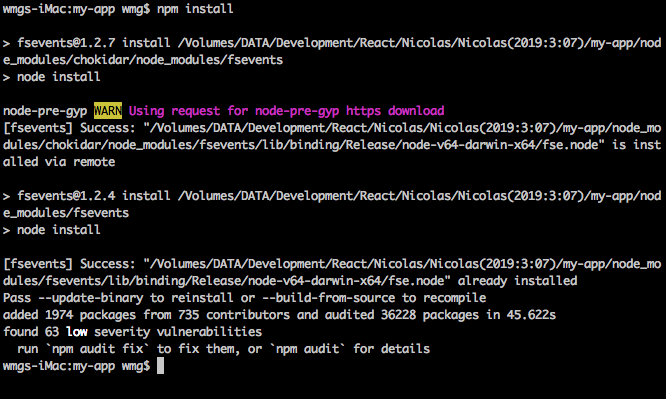
![react-scripts: command not found error [Solved] | bobbyhadz React-Scripts: Command Not Found Error [Solved] | Bobbyhadz](https://bobbyhadz.com/images/blog/react-scripts-command-not-found/react-scripts-command-not-found.webp)
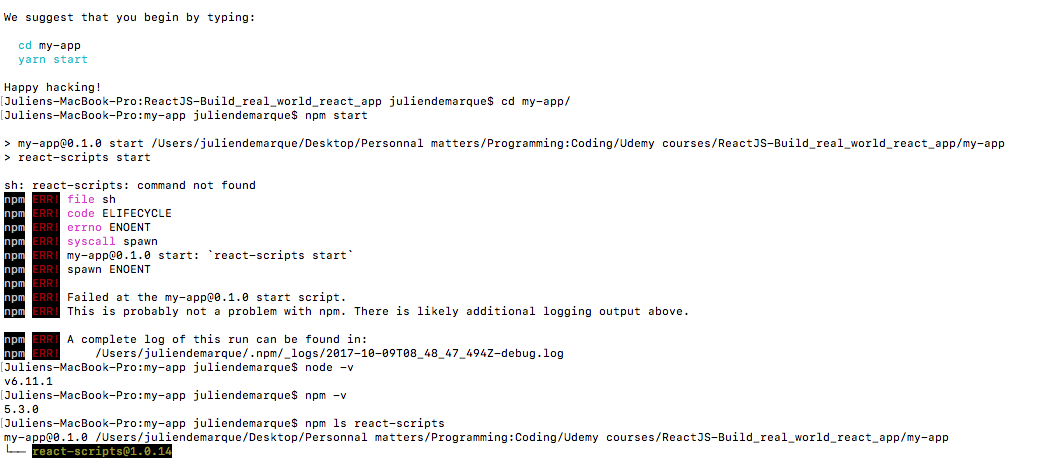












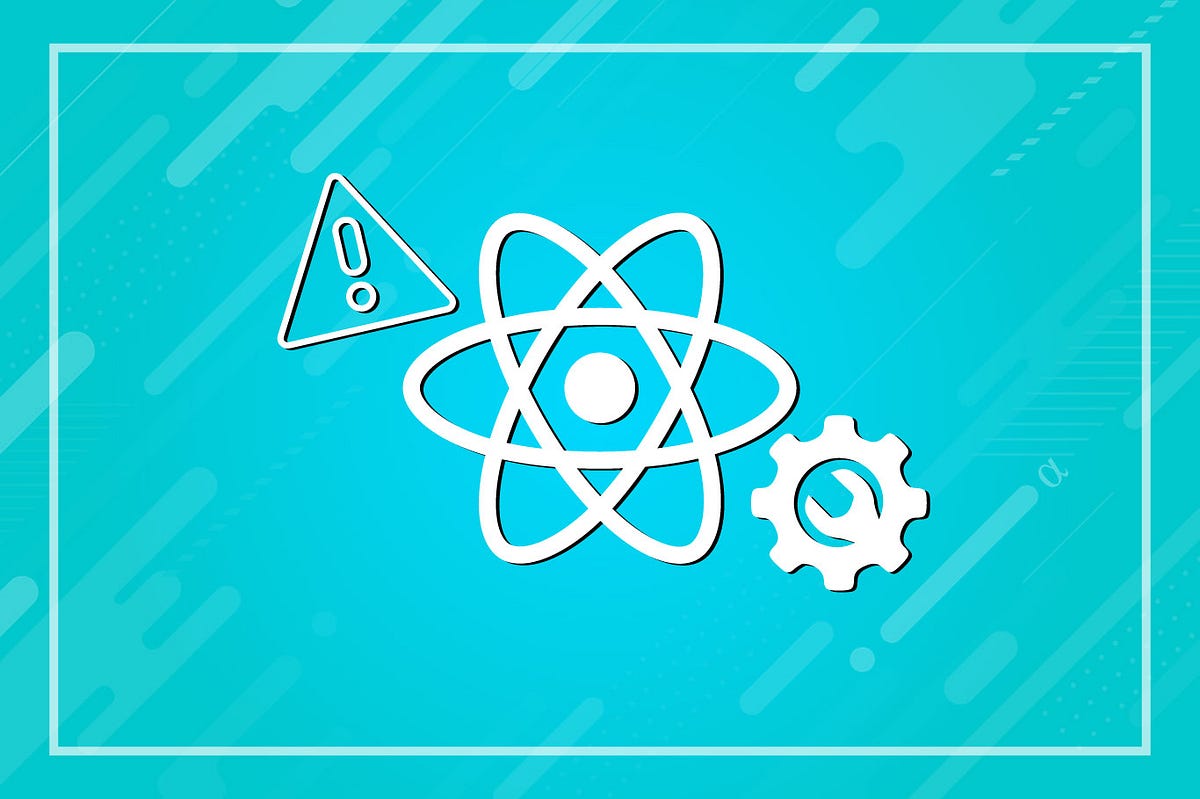


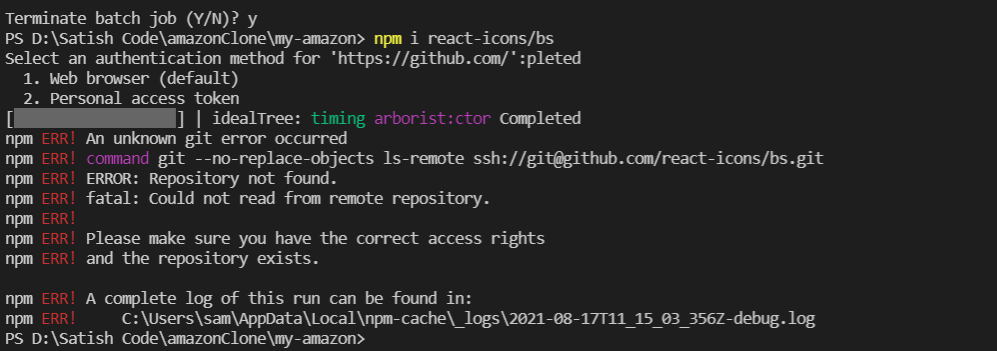

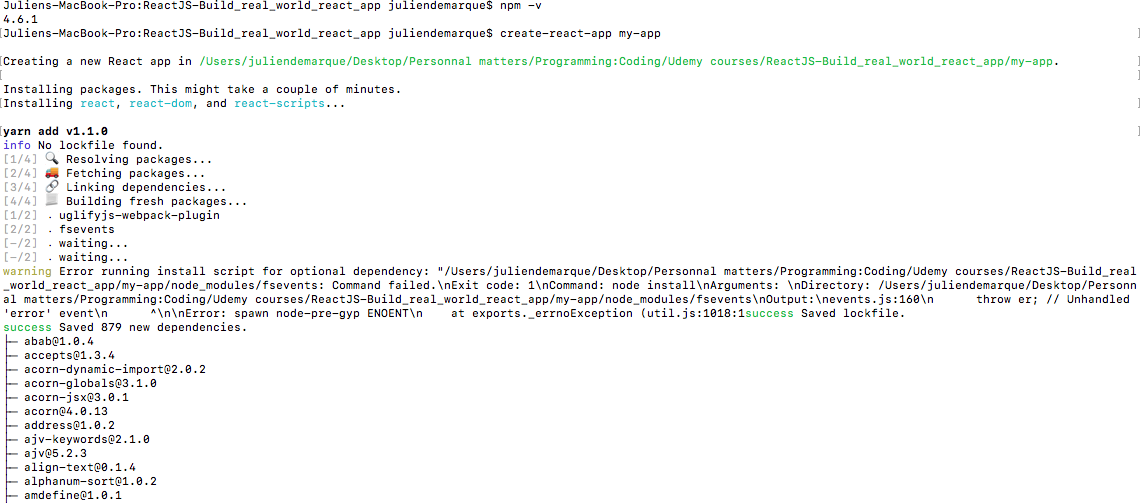





![Solved] react-scripts: command not found - ItsJavaScript Solved] React-Scripts: Command Not Found - Itsjavascript](https://itsjavascript.com/wp-content/uploads/2022/04/NPM-package-cannot-be-used-as-a-JSX-component-390x290.png)




![Solved] react-scripts: command not found - ItsJavaScript Solved] React-Scripts: Command Not Found - Itsjavascript](https://itsjavascript.com/wp-content/uploads/2022/04/ReactDOM.render-is-no-longer-supported-in-React-18-390x290.png)



![react-scripts: command not found error [Solved] | bobbyhadz React-Scripts: Command Not Found Error [Solved] | Bobbyhadz](https://bobbyhadz.com/images/blog/react-scripts-command-not-found/banner.webp)


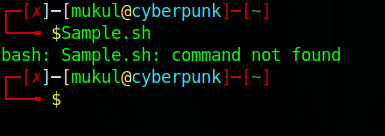









Article link: sh: 1: react-scripts: not found.
Learn more about the topic sh: 1: react-scripts: not found.
- sh: react-scripts: command not found after running npm start
- react-scripts: command not found error [Solved] – bobbyhadz
- [Solved] react-scripts: command not found – ItsJavaScript
- How to Install React JS on Ubuntu? – KnowledgeHut
- ‘react-scripts’ is not recognized as an internal or external command
- Creating package.json | React.js Essentials – Packt Subscription
- Fix: React Scripts Command not Found Error – alpharithms.com
- How to fix the react-scripts command not found Error – Reactgo
- npm start fails with ‘sh: line 1: react-scripts: command not …
- react-scripts: command not found after running npm start-Reactjs
- Fix: React Scripts Command not Found Error – Medium
- Sh: react-scripts: command not found – Questions – Daml Forum
See more: https://nhanvietluanvan.com/luat-hoc/